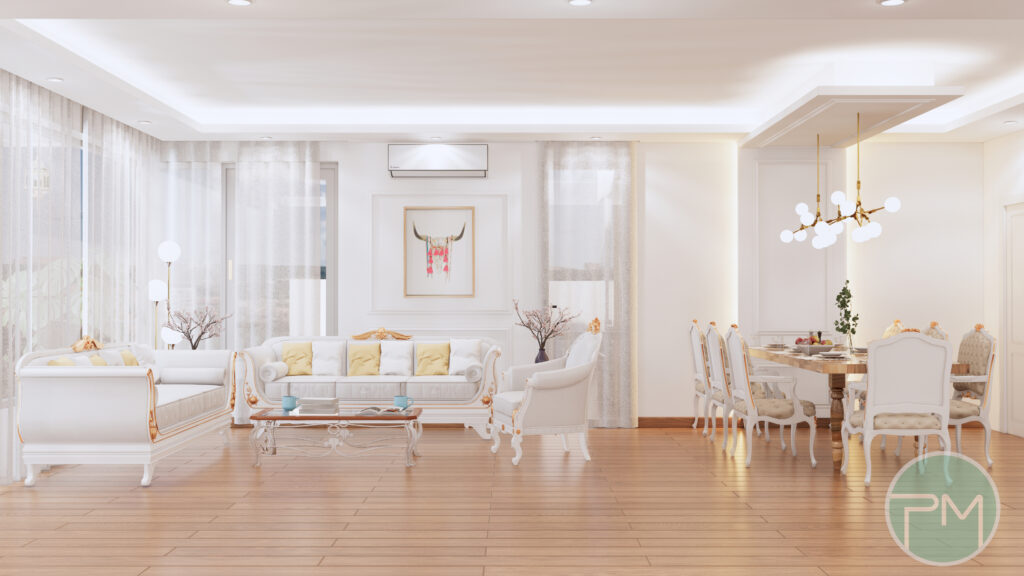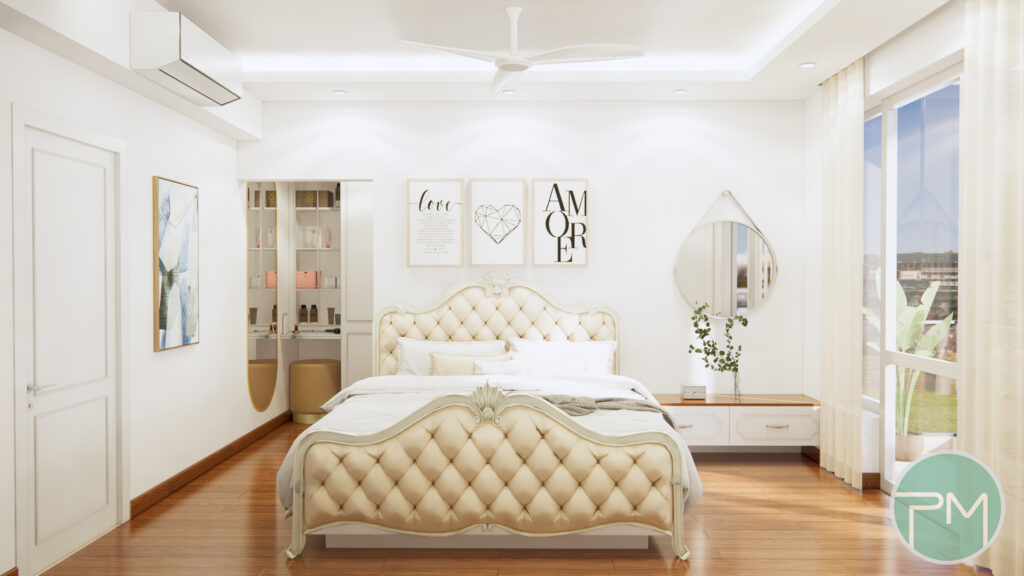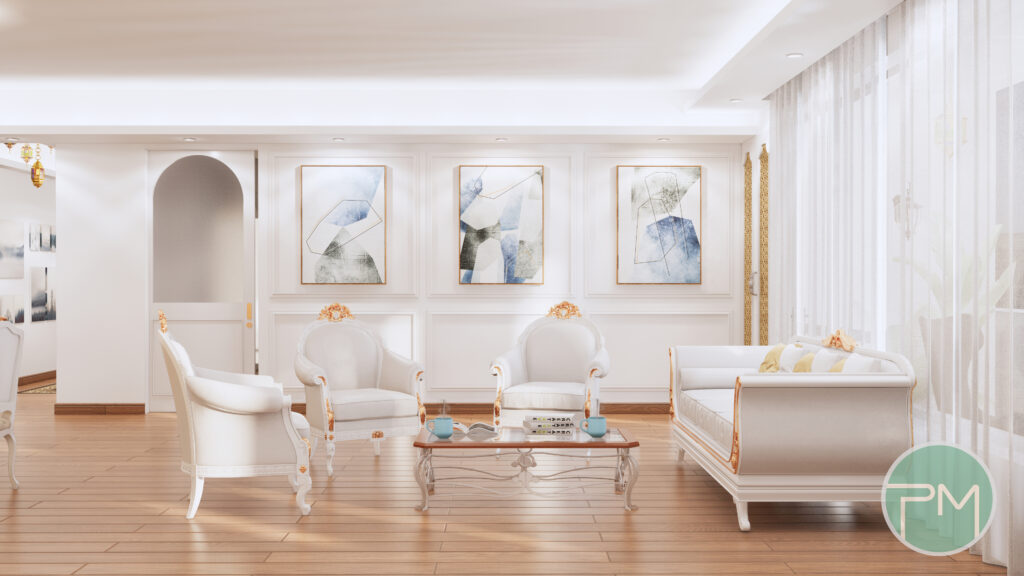
Delve into the captivating world of traditional design style interiors
Collect the full set of guidelines to design your home – for free
Introduction:
Traditional interior design is just what it sounds like- a classic and familiar home decor style that transcends specific time periods, creating a warm and comforting atmosphere. It embraces the enduring traditions of the past, evoking a sense of timeless beauty and elegance. With its emphasis on classic elements, craftsmanship, and a welcoming ambiance, traditional design offers a timeless appeal that resonates with those seeking a sense of familiarity and comfort in their living spaces.
What is traditional interior design?
DEFINITION Traditional interior design is a popular style of décor that is based largely on 18th and 19th-century European styles and conventional notions of what a home looks like. A traditional interior design scheme is timeless and placeless, comfortable, and put together but not overly fancy.

A traditional interior design scheme embodies timelessness and comfort, striking a balance between sophistication and approachability. It avoids being overly ornate or trend-driven, instead drawing from familiar elements that reference history. Furniture, textiles, color palettes, and decor choices are chosen to create a sense of familiarity rather than pushing boundaries. For instance, a traditional-style bedroom might feature a neutral color scheme, a beautifully crafted wood or upholstered headboard, coordinating nightstands and table lamps, a chest of drawers, a plush armchair with an ottoman, and perhaps a classic landscape painting adorning the wall.
Traditional interior design style in today’s time
Today, the traditional interior design style combines classic elements with modern touches. It embraces a mix of vintage and contemporary pieces, updated color palettes, and streamlined silhouettes. While still incorporating architectural details and quality craftsmanship, ornamentation is often simplified. Modern traditional interiors also integrate technology discreetly and personalize the space with unique accents. Comfort and functionality are prioritized, creating a warm and inviting atmosphere that caters to contemporary lifestyles. This blend of timeless elegance and modern sensibilities ensures that traditional interior design remains relevant and appealing in today’s homes.

Origin of traditional design style
The origin of traditional interior design can be traced back to various historical periods and cultural influences. The concept of traditional design has evolved over the centuries and has been shaped by different architectural styles and artistic movements. This sty;le is a broad and diverse style that encompasses elements from different historical periods and cultural influences.
Traditional design has evolved over time while maintaining its core principles, creating a timeless and sophisticated aesthetic that continues to be cherished in interior design today.

Key components of traditional interior design
Traditional interior design styles share some common elements that contribute to their overall aesthetic. Here are 8 key elements often found in traditional interior design:
- Showcase architectural details such as crown moldings, wainscoting, chair rails, and coffered ceilings. These elements add depth, texture, and visual interest to the space.
- Strong emphasis on symmetry and balance. Furniture arrangements are often mirrored or evenly balanced to create a sense of order and harmony.
- Feature furniture with timeless designs and refined craftsmanship. Common furniture pieces include wingback chairs, camelback sofas, claw-footed tables, and Queen Anne or Chippendale-style pieces. Furniture is typically made of dark, polished wood and may have intricate carvings or decorative details.
- Upholstery and drapery often feature fabrics like silk, velvet, damask, or brocade. These textiles add texture, depth, and a sense of opulence to the space. Traditional patterns like florals, stripes, or paisleys are commonly used.
- Classic Color Palettes: Traditional design favors a refined and sophisticated color palette. Neutral shades such as creams, beiges, and grays form the foundation, while deeper hues like burgundy, navy, and forest green are used as accents. Gold, brass, and bronze are often incorporated through accessories or hardware.
- Known for their attention to detail and decorative accents. These can include decorative mirrors with gilded frames, ornate chandeliers, sconces, and table lamps with intricate designs. Decorative objects such as porcelain vases, urns, sculptures, and antique clocks are often displayed.
- Window treatments in traditional interiors are typically elaborate and formal. Floor-length curtains or drapes made of heavy fabrics like silk or velvet are common. They may feature valances, swags, or tiebacks, adding elegance and sophistication to the space.
- Display artwork that reflects the style’s heritage and aesthetic. Oil paintings, landscapes, portraits, and still-life compositions are popular choices. Art pieces are often framed in ornate, gilded frames.
These elements contribute to the overall charm, elegance, and timelessness of traditional interior design styles.

How you can bring traditional interior design into your space
To bring traditional interior design into your home, begin by researching and gathering inspiration from various sources. Define your vision by selecting a specific traditional design style and determining the mood, color palette, and key features you desire. Choose furniture with classic silhouettes, ornate detailing, and quality craftsmanship. Use warm and inviting colors as your base, and incorporate traditional patterns and textiles in fabrics, wallpapers, and rugs. Pay attention to architectural details like moldings and wainscoting. Select traditional lighting fixtures and accessories to enhance the space. Strive for balance and symmetry in your furniture arrangement, and layer textures and fabrics for depth. Finally, personalize the design with meaningful touches that reflect your own style.

Learn how we at ‘Prayogshala Manifesto‘ use Traditional Design style –
Collect full set of guidelines to design your home – for free
We skillfully incorporate traditional interior design style into your areas by carefully selecting and curating a range of elements. We meticulously choose furniture pieces that embody classic shapes, intricate detailing, and high-quality craftsmanship, ensuring we align with the traditional aesthetic. The designers utilize warm and inviting color palettes, consisting of soft neutrals and subtle pastels, to create a timeless ambiance. Architectural details are also given careful consideration, with designers incorporating crown moldings, wainscoting, and ceiling medallions to enhance the overall traditional look and feel.

Prayogshala Manifesto can provide clients with a comprehensive selection of choices, ensuring that they are well-informed about the possibilities available to them. The main reason why it is so important to have knowledge of traditional interior design is it enriches your design understanding, enables you to create timeless and harmonious spaces, and fosters a deeper appreciation for the historical and cultural significance of design elements.
Collect full set of guidelines to design your home – for free
Need help?
We have simplified the understanding and use of traditional design styles in interior spaces.
See how Prayogshala Manifesto can help you with traditional interior style in designing complex spaces with a large number of elements like residential apartments, villas, newly bought residences, residential flats, and other complex interior spaces.